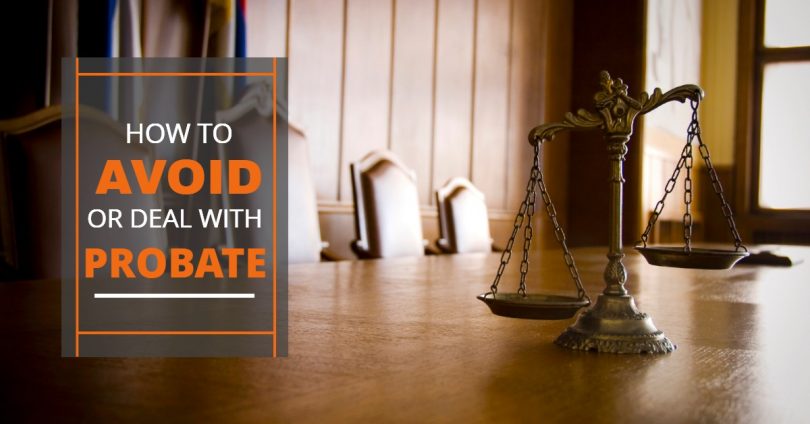To ensure that our hard-earned money is passed on to the ones we care about, and not lost in excessive probate fees or tied up for months of waiting time – there are steps you can take. We have gathered some straightforward tips which will enable your estate to get into the hands of those who matter most: quicker and with more benefits! Avoiding legal delays and costs associated with probate doesn’t need to be daunting; let’s explore how it can be done without much hassle
Avoiding Probate
The Importance of Living Trusts
Creating a living trust is a simple and effective way to bypass the probate process. In contrast to a Last Will, a living trust puts your assets and property “in trust” and assigns a trustee to manage them for the benefit of your beneficiaries. This method helps you avoid probate as the assets are already assigned to the trust.
Additionally, a trust helps to save the cost of probating a will, which can be expensive due to court fees, which are a percentage of the entire estate. By setting up a living trust, you can avoid these court costs entirely, allowing you to use the funds instead for trustee fees and other expenses like funeral costs.
Designate Beneficiaries for Your Retirement and Bank Accounts
Making a Last Will and Testament is often seen as an essential part of estate planning, but it does not necessarily mean that all assets will go through probate. In fact, many accounts can be set up to allow for designation of beneficiaries – meaning the asset transfers directly in accordance with your chosen instructions upon death. This benefit largely goes unnoticed by individuals who have opened bank or investment accounts early on in life; taking advantage of this opportunity could make administration smoother should something occur down the line.
Securing your financial future doesn’t have to be complicated; an often-overlooked step is designating beneficiaries for accounts such as life insurance policies, pension plans, 401Ks, IRAs and investments in stocks or bonds. Taking this simple yet crucial action ensures that upon one’s death the assets are handled according to their wishes – no matter how basic those instructions may seem at first glance.
Get started on protecting your finances for the future by requesting and filling out payable-on-death forms. Married couples should be aware that some accounts may already have joint ownership, but taking this extra step will make sure assets are allocated without complications in case of death – quickening distribution while minimizing costs.
Understanding Joint Tenancy with Right of Survivorship
Buying a home with your significant other or spouse is an exciting moment, but it’s also important to consider how the property will be handled in case one of you passes away. Holding real estate jointly provides needed protection and peace of mind – when done correctly – by allowing the surviving partner to take full ownership without ever having go through probate proceedings. While this applies regardless if married or not, couples should investigate Tenancy by Entirety and Community Property options for even greater assurance that their wishes are respected upon death. To ensure everything goes smoothly down-the-road make sure both partners’ designations as co-ownership owners are clearly established from day one!
Initiating Probate When There is No Will Available
To begin the process of taking up an administrator role to close out a deceased person’s estate, filing a petition in probate court is essential. This guide takes you through each step so that executing this responsibility with ease and accuracy can be achieved.
Step 1
Examine the assets of the deceased individual to determine if the estate meets the criteria for a probate exemption for small estates. It will be necessary to ascertain the estate’s worth and generate a detailed inventory of all assets that require distribution.
Step 2
Uncovering where to commence your probate proceedings is often a difficult task. It’s important to identify the state and county of residence for the individual whose estate you are managing, or if applicable, that of any real property they owned before their passing. From there it will be possible to determine which county holds jurisdiction over legal matters such as these.
Step 3
Obtain a certified copy of the death certificate and visit the courthouse to obtain the necessary forms for filing a Petition for Letters of Administration. This document requests the court to serve as the personal representative of the estate.
Step 4
Carefully and accurately complete the form requesting administration. Make sure to be fully prepared ahead of time with all relevant details for your living relatives, such as their name and address’.
Step 5
By petitioning to administer an estate, you must make sure everyone is given proper notice. This includes publishing a Notice of Petition in the local newspaper or other designated form as well as sending notices directly to family members. Taking these steps will grant creditors four months to file their claims against the estate with courts for review and determination.
Step 6
Your request has been approved unless a more suitable choice presents itself.







